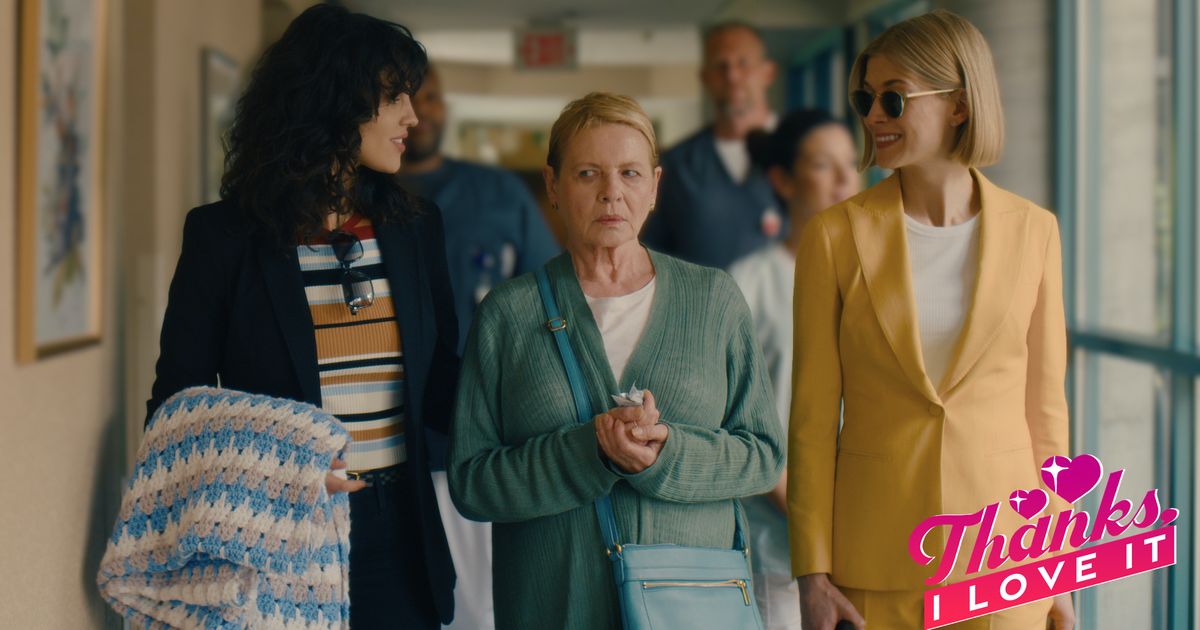
Welcome to Thanks, I Love It, our series highlighting something onscreen we’re obsessed with this week.
Netflix’s I Care A Lot is nothing if not unsettling.
Writer and director J Blakeson’s thriller can be uneven, but one thing that shines throughout is Marc Canham’s disquieting musical score. A blend of synthetic and manipulated sound elements, Canham’s score recalls the momentum of The Social Network or unease of Ex Machina. It ratchets I Care A Lot up to 11 and leaves us there to spiral.
“I was really inspired by sort of modern, almost minimalist … the world of colliding organic recording ideas and electronic and programmed ideas,” Canham told Mashable in a recent phone interview.
Canham cut his teeth composing video game scores, but he grew up inspired by Jean-Michel Jarre and Brian Eno — classic cinematic music. He joined forces with engineer Rich Aitken for video game scores, eventually meeting Blakeson for 2009’s The Disappearance of Alice Creed.
“For me, as a writer, [film] is so much easier than the complex nature of making video game soundtracks, which can sometimes feel quite unsatisfying,” Canham says. “Because you don’t really write pieces of music with beginnings, middles, and ends; you write a load of beginnings, a load of middles, a load of endings, and you have to leave it to the gamer to write it.”
He describes composing music as working in an “artistic bubble,” one which can be fully immersive on a film score but requires stepping in and out for video games. “‘Does this work with this piece of music? If this happens would it work over there?’ It’s a different thought process. Some people absolutely love that, and there’s nothing wrong with that. It’s just what makes me tick is having a god-like control over the story, ha.”
[embedded content]
Even for a cinematic composition, Canham’s experience with I Care a Lot was unique. He kept in touch with Blakeson over the years, the pair often geeking out about music and soundtracks, so Canham joined the film before the script was even complete. He had seen early photography and art, pieces of the visual narrative, and asked to go write.
“I knew the underlying message was a satirical take on the American dream,” he says. “I had these little tools to just go and experiment with, and it was it was a really nice process. There’s a few cues in the film which have pretty much stayed unchanged since those days; the edit actually started to form around the music and the DOP was listening to my music and getting a feel for it.”
That’s Director of Photography Doug Emmett, who Canham has actually never met or spoken to, yet they communicated volumes through their respective mediums as the film came together. Blakeson would play Canham’s samples while traveling to or from set with department heads or other key figures, allowing the sound to settle in to the film and its creators organically.
“I think we both kind of absorbed bits of each other,” Canham says of Emmett. “I see how people are reacting to the film and its styling… whatever they think of it, they go ‘Fucking hell, it looks lovely. But it’s horrible. I hate it, but it looks great and it sounds great.'”
[embedded content]
Though he admires traditional film scores, Canham’s own style never led him toward big orchestras and conventional sound. He manipulates known sounds with samples and equipment until they sound synthetic, and does the reverse by manipulating electronic sounds to feel “human and as emotional as possible, as much as the cello.”
“The process is quite important to me of messing around with different sounds and playing, having fun in my studio and being a bit of a kid in his Lego pit,” Canham says. “There’s nothing that beats that moment when you’re in the zone and you’re just purely experimenting with ideas. I think that’s my method is just continual experimentation.”
One of Canham’s favorite pieces in the film is “Welcome Home,” the music that starts when Marla (Rosamund Pike) arrives to send Jennifer (Dianne Wiest) to a care home for the elderly. Working on the film desensitized him to some of its horror, but watching it back with his family brought everything back.
‘The gloss is still there, and the shimmer, the veneer of the American Dream is still working its magic in the sound,” he says. “But underneath it sounds really uneasy, and I just like the effect that seems to have on everyone that watches.”
I Care a Lot is now streaming on Netflix.
